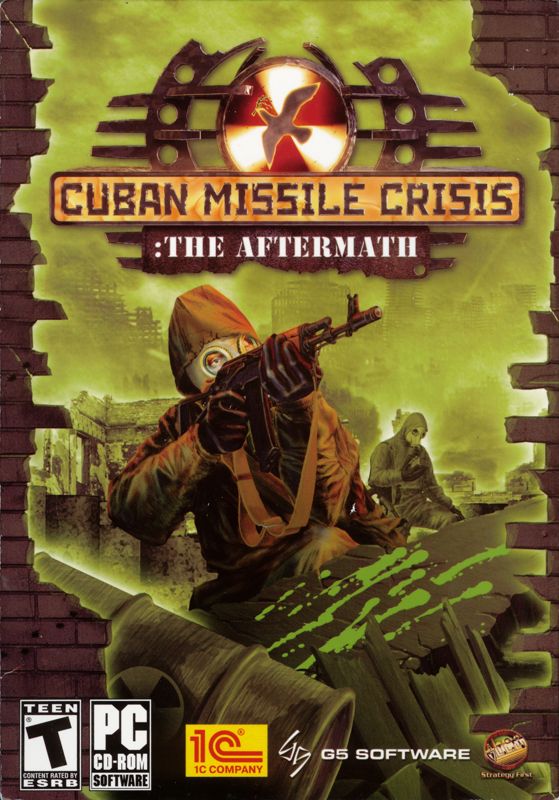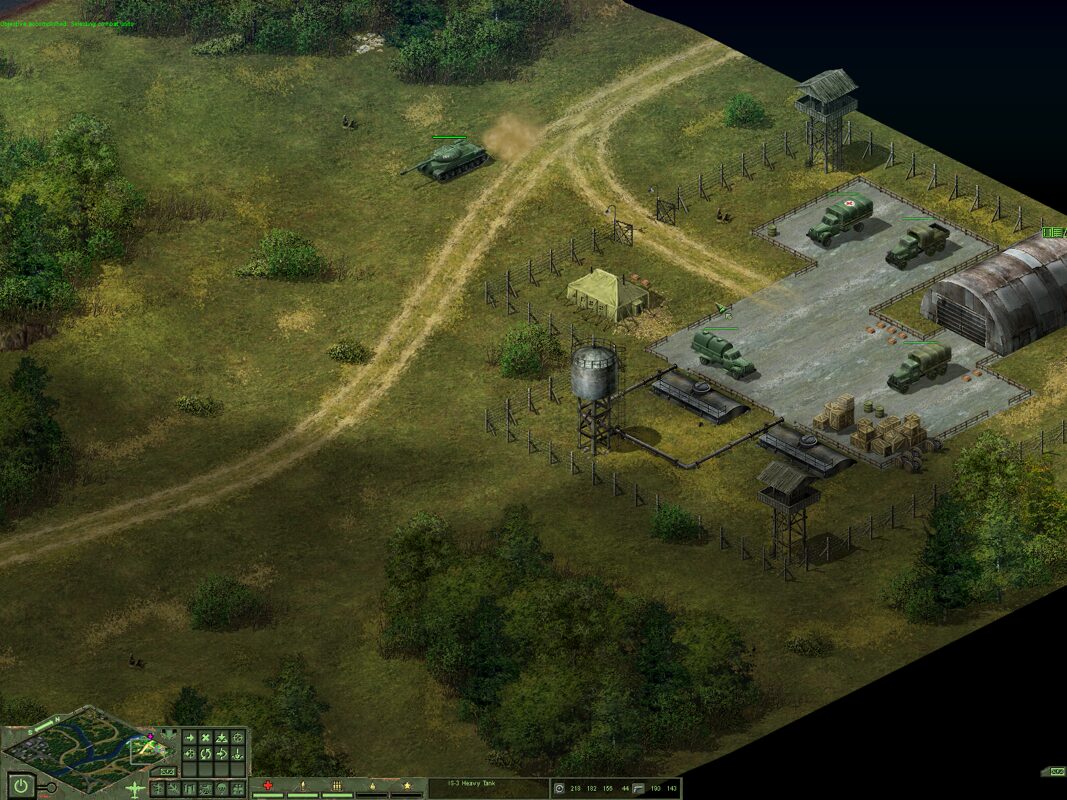Retro Replay Review
Gameplay
Cuban Missile Crisis: The Aftermath delivers a deep, two-tiered wargaming experience that alternates between a turn-based strategic layer and real-time tactical battles. On the grand map, you maneuver divisions, armored brigades, and air wings across contaminated zones in a bid to secure radars, resource points, and urban centers. Planning is crucial: every move risks exposure to nuclear fallout or overextending supply lines in hostile territory. The game’s pacing rewards forethought, and one wrong decision can ripple through subsequent turns.
When opposing forces clash, the action shifts seamlessly into the Blitzkrieg engine for real-time combat. Here you assume direct control over individual units—infantry squads, tanks, and artillery batteries—positioning them behind cover, coordinating combined arms assaults, and timing airstrikes. The dynamic weather and line-of-sight mechanics add tactical depth: marching across open fields under enemy observation can be disastrous, while flanking through wooded patches often swings the battle in your favor. These engagements feel tense and cinematic, with the threat of chemical clouds or tactical nuclear strikes ever-present.
The learning curve is steeper than most mainstream strategy titles, but the game eases you in with scenario tutorials that cover basic movement, supply management, and engagement doctrines. Once you master the interplay between the strategic and tactical layers, you’ll find a satisfying rhythm: seize a supply hub on the strategic map, then tactically eliminate enemy defenders to cement your hold. AI opponents are aggressive and adaptive—expect them to counter-maneuver you if you neglect reconnaissance or leave flanks unguarded.
Graphics
Visually, Cuban Missile Crisis: The Aftermath leverages the Blitzkrieg engine to present a clean, isometric battlefield brimming with detail. Unit sprites are well-animated, with tanks rocking on their treads and soldiers ducking for cover. Environmental effects—smoke plumes from artillery barrages, drifting radioactive haze in contaminated zones, and dynamic lighting changes from day to night—help ground you in this bleak alt-history world.
The strategic map uses clear icons and overlays to convey terrain type, contamination levels, and supply lines. Resource points glow in discrete colors, making it easy to prioritize capture targets. While the interface sometimes feels dated, tooltips and color-coded markers go a long way toward preventing confusion in complex engagements. Zooming in and out on the strategic map is smooth, allowing quick shifts between theater-wide planning and frontline details.
That said, modern gamers may notice that textures and animations lack the polish of 3D models in contemporary titles. Shadow rendering can appear rudimentary, and explosion effects are more functional than flashy. However, the graphics never impede gameplay clarity—every unit remains distinguishable even in the heat of battle. For enthusiasts of classic wargames, the aesthetic strikes a nostalgic balance between readability and atmosphere.
Story
The narrative premise is both bold and unsettling: the Cuban Missile Crisis of 1962 triggers a full-scale nuclear exchange, plunging the world into a Third World War. In this devastated landscape, surviving powers scramble to control the last uncontaminated zones—creating an alternate-history backdrop that drives both strategic objectives and scenario design. Each campaign briefing sketches out shifting alliances and national priorities, from the USA-UK bloc to isolated superpowers like China and the USSR.
Although the game’s primary focus lies in strategy and tactics, the story threads woven through individual scenarios provide context and immersion. Briefing videos and text logs explain why certain regions are vital, highlight intel assessments, and introduce historical figures recast as wartime commanders. This narrative framing enriches mission goals—capturing a radar station in Greenland feels significant because you understand how it feeds real-time intel to NATO forces across the North Atlantic.
Dialogue and voiceovers can be sparse, but each chapter conveys the grinding desperation of a world on the brink. The sense of urgency never wanes: you’re not just chasing victory points; you’re fighting for survival in a radioactively scarred globe. While hardcore story-driven gamers may crave deeper characterization or branching narratives, the game’s storyline firmly supports the wargame experience without bogging it down in superfluous drama.
Overall Experience
Overall, Cuban Missile Crisis: The Aftermath is a compelling, if demanding, choice for strategy veterans and Cold War aficionados. Its dual-layer system offers satisfying variety, while scenario diversity—from major theater conflicts in Europe to skirmishes in Asia—keeps the challenge fresh. The blend of grand strategy and real-time tactics fosters high replay value, whether you’re experimenting with alternative alliances or refining blitz tactics on the battlefield.
The learning curve and dated interface may deter newcomers, but the game’s depth rewards patience. A comprehensive manual and in-game help screens guide you through core mechanics, and the community has produced numerous mods and balance tweaks to enhance longevity. Multiplayer skirmishes can be equally brutal, pitting human cunning against nuclear-scarred battlegrounds for unpredictable outcomes.
In the end, Cuban Missile Crisis: The Aftermath stands out as one of the more ambitious alternate-history wargames of its era. It doesn’t chase modern visual flair, yet its strategic richness and tense tactical firefights more than compensate. If you’re seeking a title that challenges your planning skills and thrusts you into a grim, hypothetical Cold War gone hot, this game delivers a uniquely immersive journey through the ashes of global nuclear warfare.
 Retro Replay Retro Replay gaming reviews, news, emulation, geek stuff and more!
Retro Replay Retro Replay gaming reviews, news, emulation, geek stuff and more!









Reviews
There are no reviews yet.